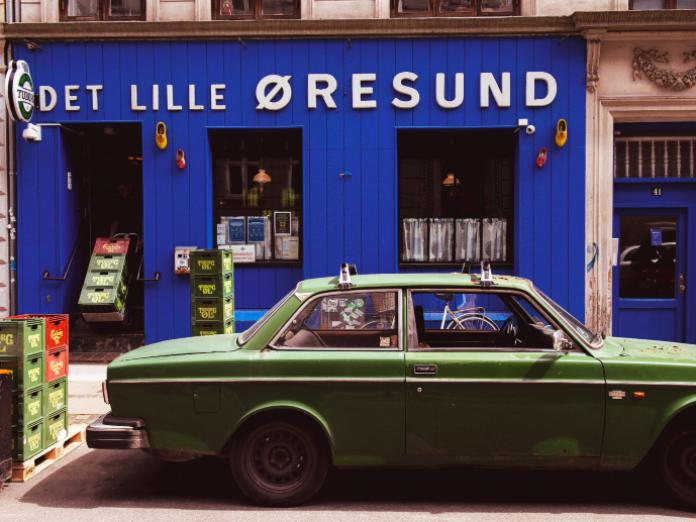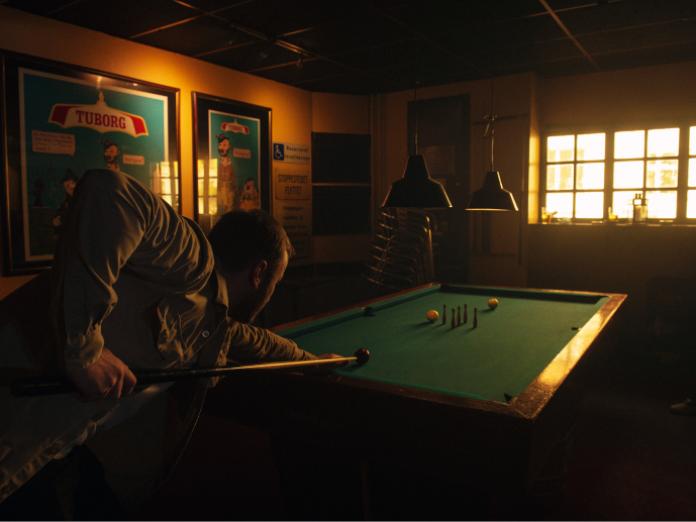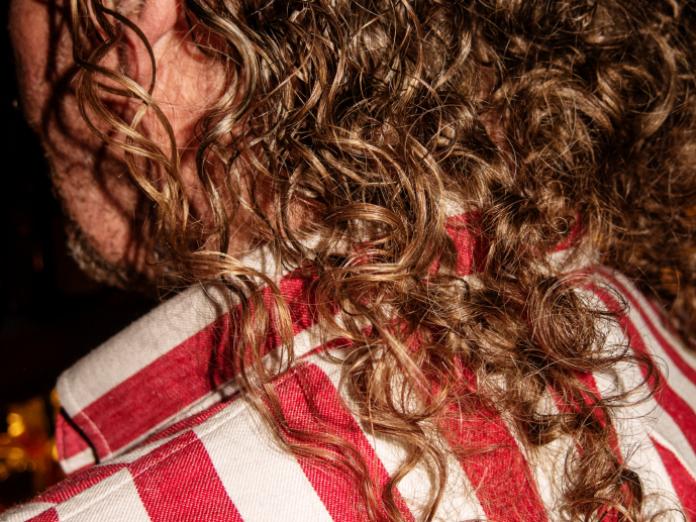Photo exhibition: The Local – Copenhagen’s Last Pubs
A unique piece of Danish culture is disappearing – the local pub. At the end of the 1980s there were over 1,000 pubs in Copenhagen. Today just over 200 are left. Two authors and a photographer have visited them all. See some of the most striking Copenhagen pubs and hear about their secrets and oddities in this new exhibition at the Museum of Copenhagen – afterwards you may want to visit some of them yourself.
Smoky surroundings and welfare office
Enjoying a beer in smoky surroundings has been replaced by a drinking a cortado with oat milk at one of Copenhagen’s new outdoor cafés, and these days the emblems of biker gangs are outnumbered by hipster lumberjack shirts. As urban renewal reaches into every nook and cranny of the city, Copenhagen’s old pubs either disappear or change into something else. But being a regular is still an important part of some Copenhageners’ lives. The local pub also functions as a welfare office, drop-in centre, family and home.

Places of stories and secrets
Copenhagen’s pubs are places of stories and secrets as dark as the murkiest stout. But they’re also full of laughter and life that can last until the small hours seven days a week. Some of the pubs have Christmas decorations they’re reluctant to take down. Others are full of baubles of other kinds. Regardless of the décor, every single one of them has a story to tell.
This exhibition presents edited excerpts and photographs from the bestseller book ‘Stamsteder – Københavns sidste værtshuse’ (The Local – Copenhagen’s Last Pubs). The book’s authors Anders Højberg Kamp and Johannes Jacobsen and photographer Thomas Skou visited every old pub in town. The museum has chosen 14 of them from 14 different areas of Copenhagen.
For everybody
Youngsters and oldies, philosophers and cokeheads, alcoholics and celebrities, there’s room for everyone at the bar whether to they want to quench their thirst with a single beer or drink to forget. As long as the punters don’t resort to fisticuffs or cross the fine line between charming tipsiness and looking for trouble.

Case: Nørrebro – one of 14 different areas of Copenhagen
There might be less pubs in Nørrebro – a traditional old Copenhagen working class neighbourhood close to the city centre – than in the good old days when there were hundreds. There’s not that many left in central Nørrebro or east of Jagtvej, but if you head west they’re still alive and kicking.
Sorte René (Dark René) at Nørrebro
Choosing to name his pub after René was an obvious choice for Frank. René had been a regular at Café Ægir where Frank used to be the bartender.
“He had a catchy name, but he was in a bad way. He was an ex-junkie and shoplifter, so he got called Sorte René [Dark René] because there wasn’t much light on the horizon. He took too many drugs, only had half a finger left, and had lost half a leg to gangrene. Naming the pub after him was a way to give him something brighter, and he actually came to the opening party,” Frank says at a table with two bottles of Carlsberg as garage rock mixes with the din of the pub’s gaming machines.
There was even an interview with René in the local newspaper. He told the journalist that he’d discovered the no. 66 went right to the door of the pub, so he didn’t have to take a taxi or get there on his crutches.
“But he never did take that bus. The last time I saw him was when he did that interview. He never came back,” Frank says.
Frank’s mates have been given free rein to decorate the walls of the pub. Once someone came with a huge piece of art from the Youth House at Jagtvej 69. It now hangs left of the entrance. Frank also tells us that there have been times when they’ve set the floor on fire and ignited hydrochloric acid bombs inside.
“Why would you do that in your own pub?”
“For kicks. I couldn’t give a damn. We like a bit of action around here.”
Further information
Curator Regitze Lindø Westergaard, ez4f@kk.dk, +45 4042 6458
Head of Communication Jesper Thomas Møller, d64b@kk.dk, +45 4019 7485
Museum of Copenhagen
Photo exhibition: The Local – Copenhagen’s Last Pubs
December 1st 2022- February 28th
Stormgade 18
DK-1555 Copenhagen V
Every day 9:00-18:00, Thursday 9:00-21:00

A Beginner’s Guide to Copenhagen Pubs
by Allan Mylius Thomsen
If you make an appearance at a new pub and are maybe not the most experienced pub patron there are certain ground rules you have to respect. First of all, you have to remember that most pubs are an extension of people’s living room – a home away from home for the regulars. Well-established social conventions prevail, often authoritatively administered by the pub owner or bartenders.
If you step inside and all the customers are standing close together at the bar and nobody is at the tables, be on your guard. If everyone at the bar turns around and glowers in silence there’s probably something in-house going on. A quick nod, then out the door you go.
If, on the other hand, the customers are dispersed around the pub and there’s plenty of space at the bar and tables, you have no worries.
At the bar itself you also need to be careful. Before you sit down it’s a good idea to ask the bartender if the seat is taken. It could be the regular spot of a regular customer.
The first time you visit a new local it’s a good idea to offer to buy the bartender a drink by way of introduction. The bartender might decline the offer, but if they accept you have a conversation opener.
It’s a good idea to say “Keep the change” when you pay. It signals that you want to be sociable during your visit.
As a customer in a new pub you pay for every drink or round as you order. Tabs are only for regulars.
As a newcomer it’s a seriously bad idea to disagree or argue with the bartender. Barmaids in particular are sacrosanct at local pubs, and will almost always be defended by their regular customers.
If you sit at the bar you let the other customers there know you’re happy to chat. Everyone is usually free to contribute to the banter, and you’ll soon discover that every pub has its local expert on football, politics, illness, taste and everything else worth knowing.
Be careful about expressing a political opinion too quickly or strongly. It’s not unthinkable that the regular customers have opinions of their own, so it’s a good idea to get an idea of the lie of the land before you state yours.
Check people’s reactions if you sit at a table. You might have occupied the regulars’ table, just waiting for them to arrive.
It's also not a good idea to sit at a table that’s already occupied. Again, it could be a table where only regulars sit. If you’re invited to join a table of regulars, introducing yourself by buying a round gets things off to a good start.
If there are dice cups on the table or you’re invited to join a game you should follow the lead of the other players. There’s endless variations on every dice game – and as many ways to cheat if playing for money. If you think you might be in the company of dice sharks you’d do best to leave after the first game.
Sitting at a table alone lets people know you’re not feeling that sociable.
Some pubs have signs banning the use of mobile phones. It’s a good idea to respect that.
Don’t wave, whistle or shout for service. That’s something you do with a dog. A discrete signal is usually enough to get the attention of the bartender.
Apart from that, the tone at a local pub is usually friendly and hospitable.